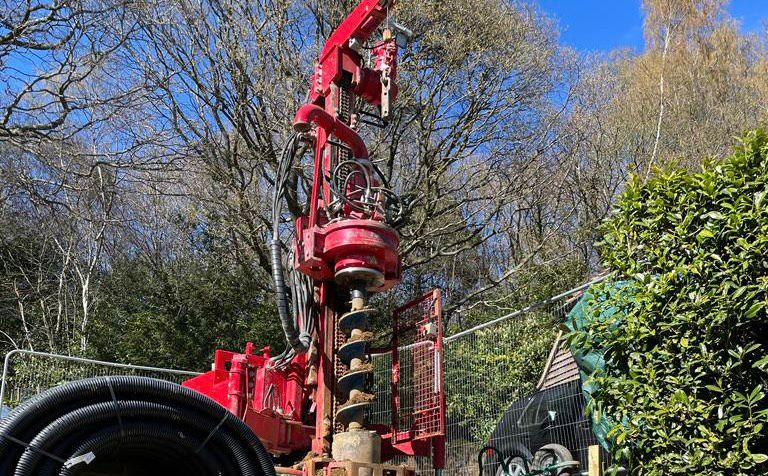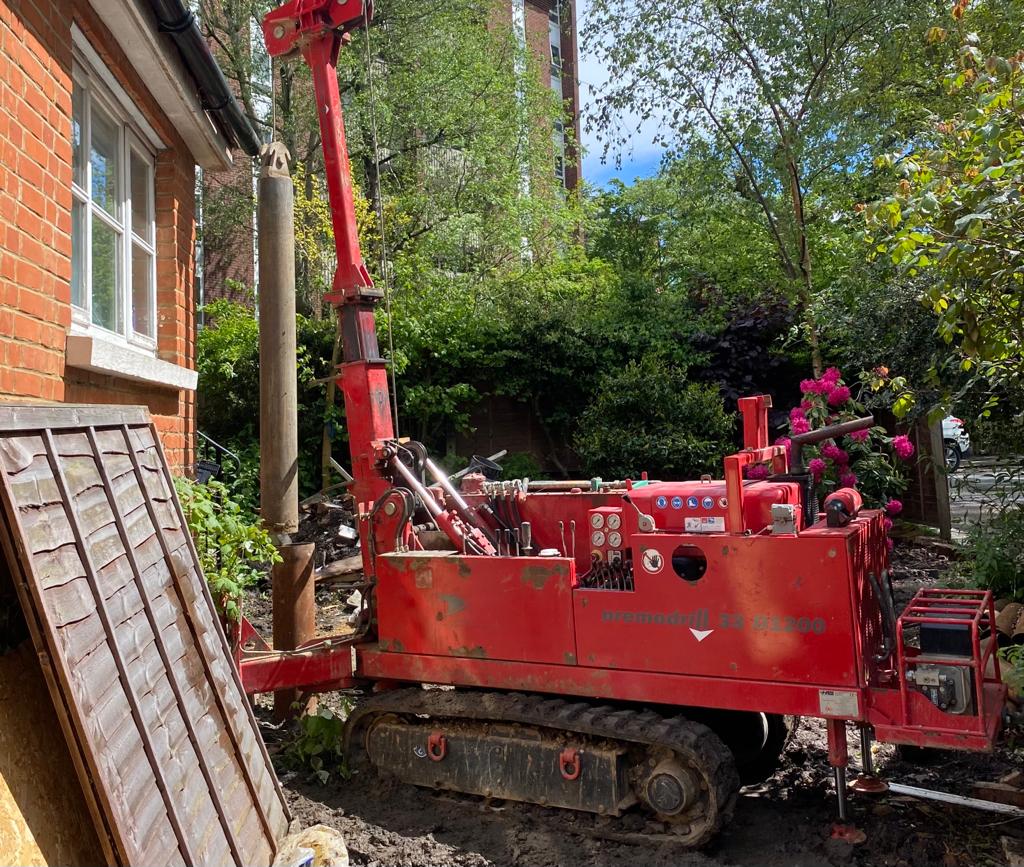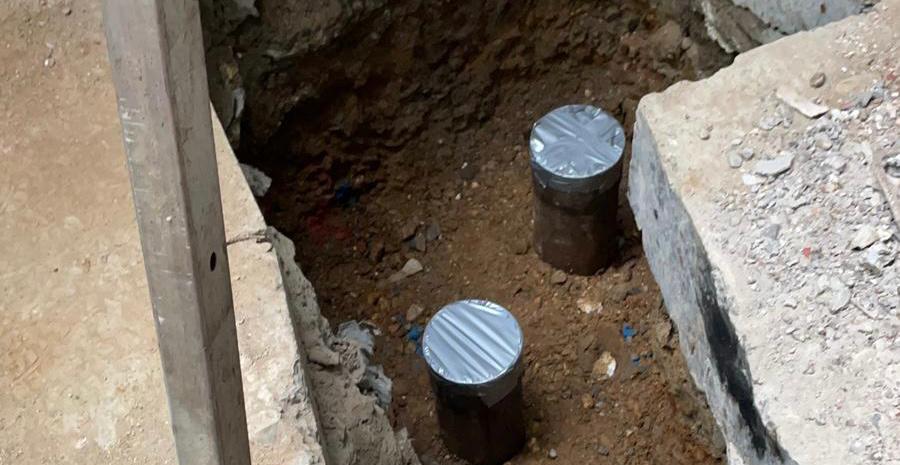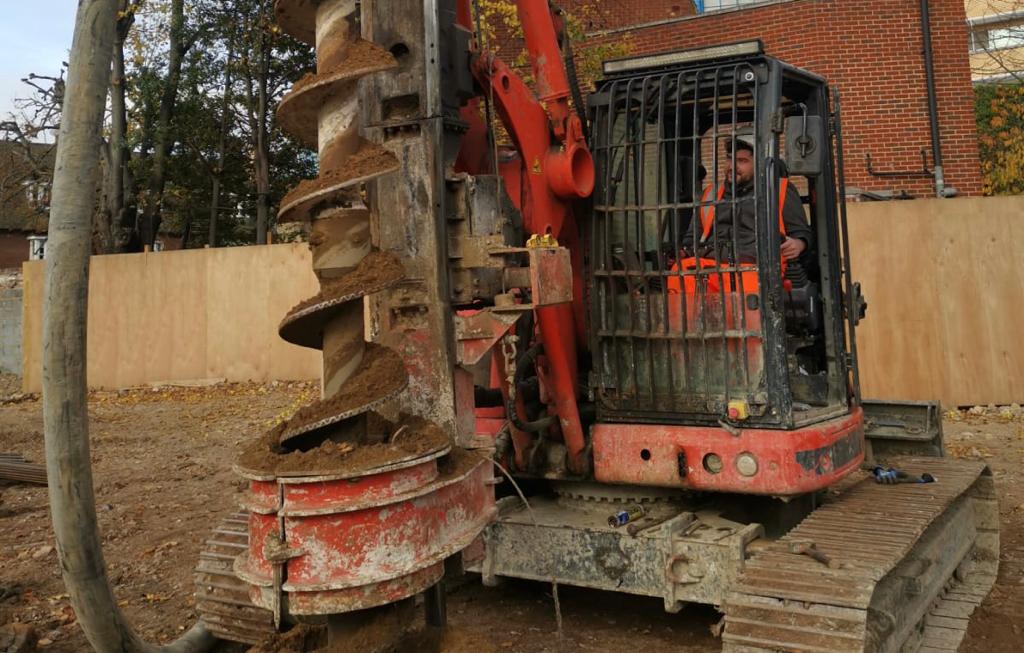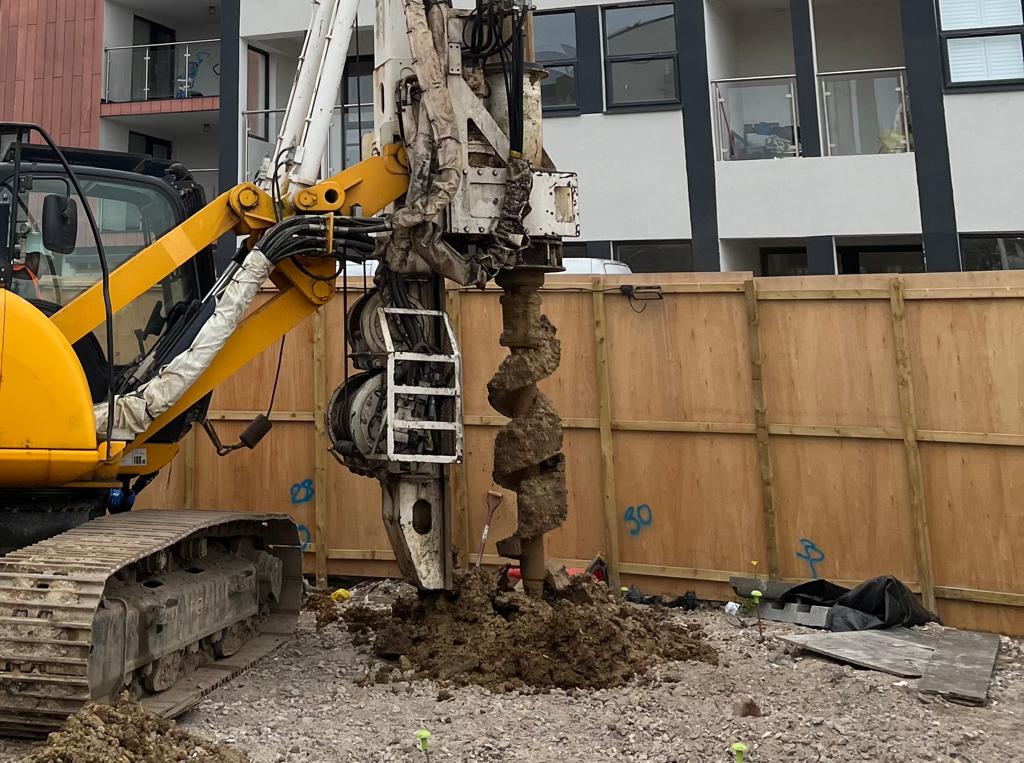Mini/Micro Segmental Piling (SFA) Segmental Flight Auger
This method is brilliant for limited site access and limited headroom. To operate, we will use rigs ranging from a 2-Ton, door entrance drivable rig, which can drill piles from 150mm up to 300mm in diameter maximum depth of 15m, up to a 15-Ton piling rig, which can drill from 300mm diameter up to 450mm in diameter down to 20m. We will supply augers of 1m -1.5m section and manually install them metre by metre. This solution will work for clay or chalk grounds, where the borehole needs to stay formed and open with no water strikes and gravel. This method is vibration free.

